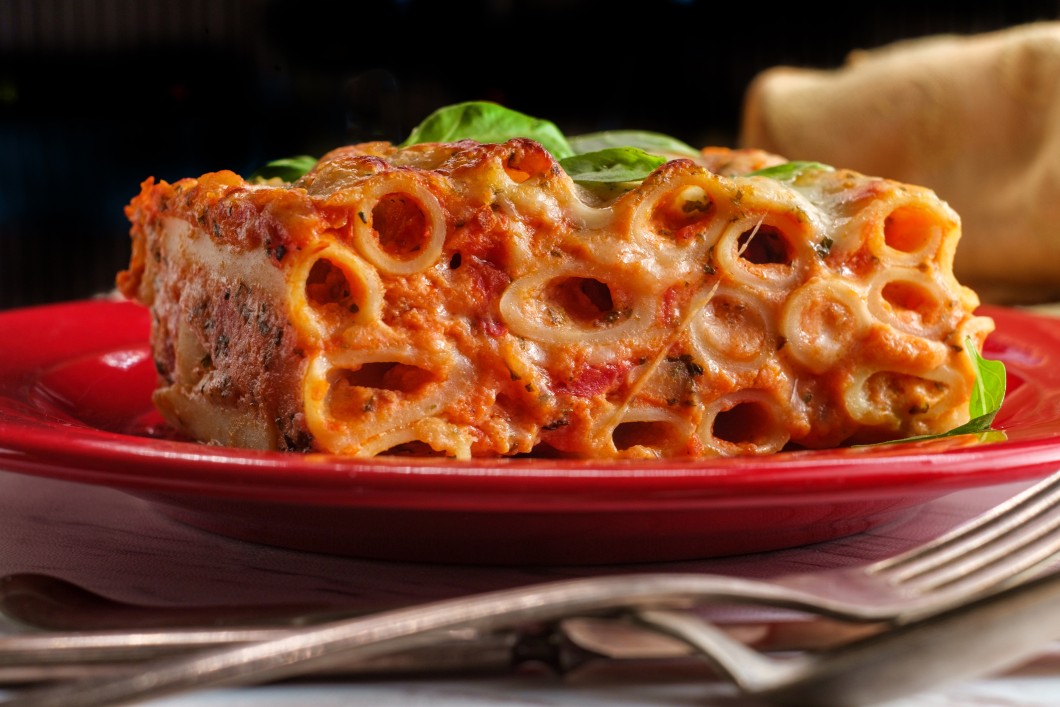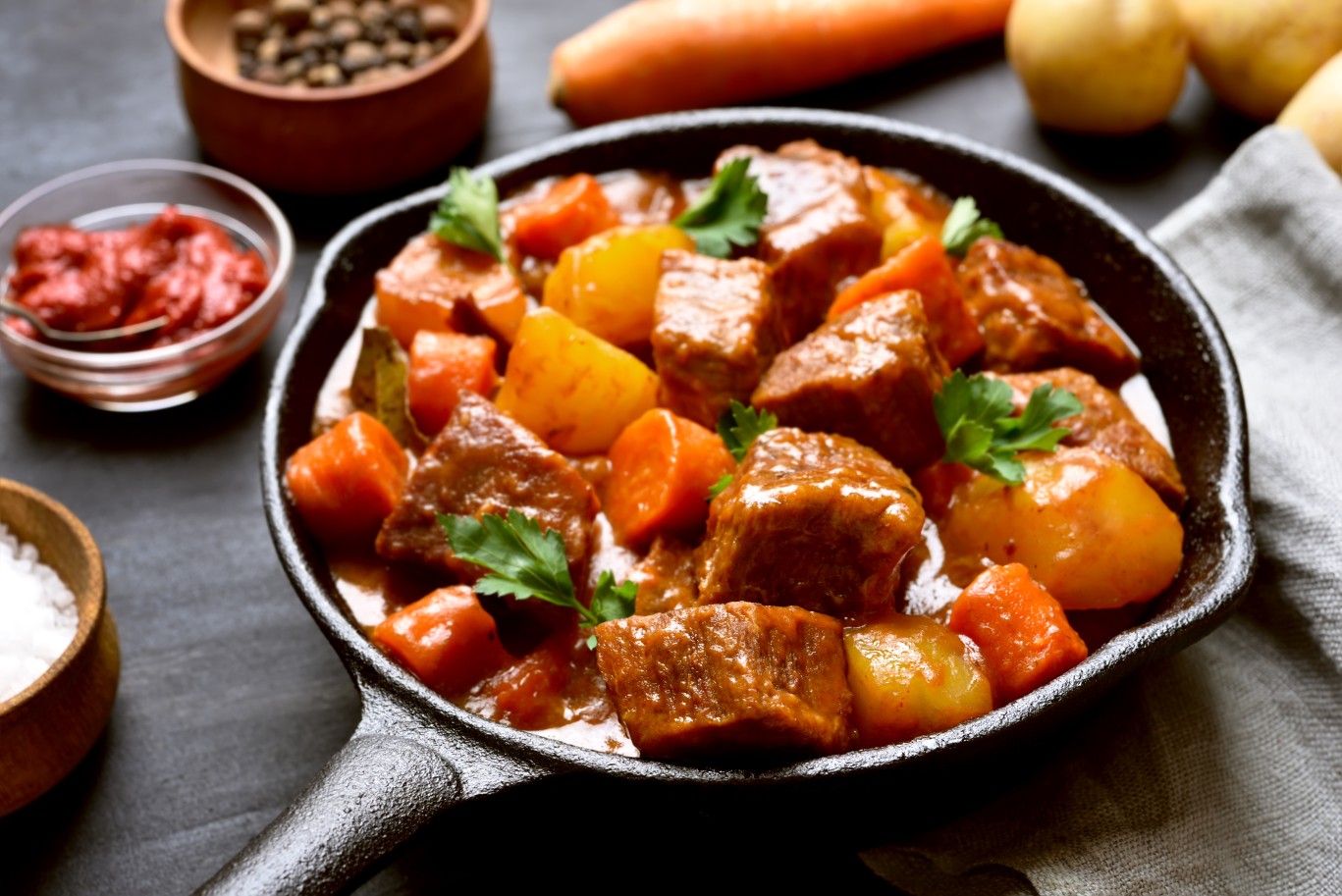We’ve taken on minestrone before, with a base recipe that you can use to make just about any variation you want. But minestrone alla Genovese, Genoa-style minestrone, is different enough it really does merit its own post.
There’s no soffritto to create a flavor base, no preliminary rosolatura of the vegetables. You just simmer beans and then all the rest of the vegetables in water, with a pinch of salt and a drizzle of olive oil. And perhaps a Parmesan rind if you have one on hand. From the recipe you might think this soup would be utterly boring, but in fact it’s quite delicious. It gets its flavor from the vegetables themselves, enhanced by—what else, this being Liguria—a final enrichment of pesto alla Genovese

Delicious minestrone (Photo: Dreamstime)
Ingredients
- 200 g (1 cup) dried beans, preferably borlotti
- 1 medium leek
- 1 carrot
- 1 stalk of celery
- 150g (5 oz) green beans
- 1 medium zucchini
- 1/4 small head of green cabbage, preferably of the Savoy variety
- 100g (3-1/2 oz) Swiss chard leaves (or spinach)
- 1-2 small potatoes
- 1/4 small pumpkin (about 250g/8 oz), skinned and seeded
- 1 small eggplant
- 1 piece of Parmesan rind (optional)
- 200g (7 oz) ditalini or other soup pasta (see Notes)
- Olive oil
- Salt and pepper

Photo: Frank Fariello
For the final touch:
One pot of fresh pesto alla Genovese

Minestrone with pesto (Photo: Dreamstime)
Directions
Let the beans soak overnight. Discard the soaking water and replace with fresh water to cover them well. Simmer in a large pot until nearly tender, about an hour.
While the beans are simmering, trim and cut up all the other vegetables into small dices.
When the beans have cooked sufficiently, add the vegetables to the pot and enough water to cover them by a good 3cm/1 inch, along with a drizzle of olive oil, a good pinch of salt, and the Parmesan rind if using. Simmer gently for a good 45 minutes.
Take a ladleful or two of the soup and purée it in a blender. Add back to the pot, along with the pasta and, if things look too thick or dry, more water. Simmer for another 8-10 minutes, mixing from time to time to avoid scorching or sticking, until the pasta is done.
Let the soup rest for a few minutes, then mix in the pesto before serving.

Borlotti beans are a key ingredient of minestrone alla genovese (Photo: Dreamstime)
Notes on Minestrone alla Genovese
In a minestrone alla Genovese, there is a strong emphasis on the green vegetables you typically find locally in Liguria. Green beans, for example, which you’ll often find paired with potatoes in trenette col pesto. Then there’s the zucchini, Swiss chard and Savoy cabbage. But do feel free to vary your vegetables according to the season and what you have on hand. I used pumpkin since they’ve just come into season, and you might want to replace the beans with peas in the spring, for example, or leave out the eggplant in the winter.
And, as usual, precise measurements are not all that important. Don’t hesitate to throw in those extra few green beans you’ve found at the back of your produce bin. In fact, you could think of minestrone alla Genovese—any sort of minestrone, really—as the kind of dish Italians call svuotafrigo, or “clear out the fridge.” But along with your creativity and frugality, do use your common sense. Try to balance the flavors, and avoid strongly flavored veg like peppers that would overwhelm the others.
The Parmesan rind is optional but it adds a lovely extra layer of flavor. Omit it if you are eating vegan, of course. Some recipes call for broth, but the soup has plenty of savor without it.

Ditalini rigati are a good pasta option for minestrone (Photo: Dreamstime)
The beans
They say that for a truly authentic minestrone alla Genovese you should use grixi and belin beans, heritage varietals native to Liguria. These days, most recipes call for borlotti, the beautiful coral colored beans.
If you can’t find borlotti, which can be a bit elusive in some markets, cannellini or another mildly flavored bean will do fine. And if you want to save time and trouble, you can actually used canned beans as well, which you could add about halfway through the simmering time.
Canned beans are a great convenience and, truth be told, in soups and stews the difference between canned and dried beans is actually pretty subtle. In this recipe, though, you’ll lose the good flavor from the beans’ simmering liquid, which adds mightily to its depth of flavor. On the other hand, if you can land yourself some fresh borlotti beans, sometime available in the early summer, just shell them and add them to the pot along with all the other vegetables.
The pasta
Factory-made pasta shapes can be roughly divided into three categories. First, long pastas like spaghetti or linguine. Second come short pastas like penne or rigatoni. And finally soup pastas, usually very small, like the tubular ditalini or the tiny acini di pepe (aka “peppercorns”). It’s this third category of pasta you want for your minestrone alla Genovese. Indeed, you want to use it for soups in general, as the name implies. Its small shape makes it eatable with a soup spoon.
Indeed, soup pastas are sometimes called “spoon pastas.” Rice can also be substituted for the pasta if you like it better. Or you can leave it out altogether if you’re avoiding carbs or just prefer it that way.
Making Ahead Notes
Minestrone alla Genovese can also be enjoyed in the warm weather months freddo. Literally, it means cold, but in this case it really just means that the soup has been left to cool until its reached room temperature.
In fact, like a lot of soups, minestrone alla Genovese improves after an overnight rest. But in that case it’s best to stop before you add the pasta or the pesto. Bring the soup back to a simmer, then finish the soup by adding the pasta (and some more water if needed) and proceed with the recipe from there.
If you wind up with leftovers of the finished soup, the next day you’ll notice that the pasta will have doubled in size and absorbed all of the liquid. This will leave you with a very thick stew-like soup. I actually rather like my minestrone that way, but if you don’t, just add a bit of water as you gently reheat it. The pasta will be quite soft but the soup will be perfectly enjoyable.
Frank is a lawyer with a true passion for cooking and sharing food with the people he loves. He inherited his love for Italian cuisine and culinary tradition from his grandmother, nonna Angelina, to whom he dedicated his culinary blog, Memorie di Angelina: www.memoriediangelina.com
Abbiamo già parlato di minestrone in passato, con una ricetta base che potete usare per fare praticamente tutte le varianti che volete. Ma il Minestrone alla genovese è abbastanza diverso da meritare un articolo tutto suo.
Non serve il soffritto per creare una base di sapore, non c’è una rosolatura preliminare delle verdure. Basta cuocere a fuoco lento i fagioli e poi tutto il resto delle verdure in acqua, con un pizzico di sale e un filo d’olio d’oliva. E magari una crosta di Parmigiano, se ne avete a portata di mano. Dalla ricetta si potrebbe pensare che questa zuppa sia assolutamente noiosa, ma in realtà è piuttosto deliziosa. Prende il suo sapore dalle verdure stesse, esaltate – da cos’altro visto che siamo in Liguria – dall’aggiunta finale del pesto alla genovese.
Ingredienti
– 200 g (1 tazza) di fagioli secchi, preferibilmente borlotti
– 1 porro medio
– 1 carota
– 1 gambo di sedano
– 150g (5 oz) di fagiolini
– 1 zucchina media
– 1/4 cespo piccolo di cavolo verde, preferibilmente della varietà Savoy
– 100g (3-1/2 oz) bietole da costa (o spinaci)
– 1-2 piccole patate
– 1/4 di piccola zucca (circa 250g/8 oz), sbucciata e senza semi
– 1 piccola melanzana
– 1 pezzo di crosta di Parmigiano (opzionale)
– 200g (7 oz) di ditalini o altra pasta per zuppe (vedi Note)
– Olio d’oliva
– Sale e pepe
Per il tocco finale:
un barattolo di pesto fresco genovese
Istruzioni
Lasciate i fagioli a mollo per tutta la notte. Eliminate l’acqua di ammollo e sostituitela con acqua fresca che li copra bene. Fate cuocere a fuoco lento in una pentola grande fino a quando non saranno quasi teneri, circa un’ora.
Mentre i fagioli cuociono a fuoco lento, pulite e tagliate a dadini tutte le altre verdure.
Quando i fagioli saranno sufficientemente cotti, aggiungete le verdure nella pentola e mettete acqua a sufficienza per coprirle di ben 3cm/1 pollice, insieme a un filo d’olio d’oliva, un buon pizzico di sale e la scorza di Parmigiano se la usate. Fate bollire dolcemente per ben 45 minuti.
Prendere un mestolo o due della zuppa e passarla in un frullatore. Rimettetela nella pentola, insieme alla pasta e, se vi sembra troppo densa o asciutta, aggiungete altra acqua. Fate bollire a fuoco lento per altri 8-10 minuti, mescolando di tanto in tanto per evitare che la pasta si bruci o si attacchi, fino a quando la pasta non è pronta.
Lasciare riposare la zuppa per qualche minuto, poi mescolatevi il pesto prima di servire.
Note sul Minestrone alla Genovese
In un Minestrone alla genovese, c’è una forte enfasi sulle verdure verdi che si trovano tipicamente in Liguria. I fagiolini, per esempio, che spesso si trovano abbinati alle patate nelle Trenette col pesto. Poi ci sono le zucchine, le bietole e la verza. Ma sentitevi liberi di variare le verdure a seconda della stagione e di ciò che avete a disposizione. Ho usato la zucca da quando è arrivata la sua stagione, e potreste voler sostituire i fagioli con i piselli in primavera, per esempio, o escludere le melanzane in inverno.
E, come al solito, le misure precise non sono così importanti. Non esitate a buttare quei pochi fagiolini in più che avete trovato sul retro del vostro cassetto. In effetti, si potrebbe pensare a un Minestrone alla genovese – a qualsiasi tipo di minestrone, in realtà – come il tipo di piatto che gli italiani chiamano “svuotafrigo”. Ma insieme alla creatività e alla vostra frugalità, usate il vostro buon senso. Cercate di bilanciare i sapori, ed evitate verdure fortemente aromatizzate come i peperoni che travolgerebbero gli altri sapori.
La scorza di Parmigiano è facoltativa, ma aggiunge un delizioso strato extra di sapore. Omettetela se state mangiando vegan, naturalmente. Alcune ricette richiedono il brodo, ma la zuppa ha molto sapore anche senza.
I fagioli
Dicono che per un vero e proprio Minestrone alla genovese si dovrebbero usare i fagioli grixi e belin, varietà autoctone della Liguria. Al giorno d’oggi, la maggior parte delle ricette prevedono l’uso di borlotti, i bellissimi fagioli color corallo.
Se non si trovano i borlotti, che in alcuni mercati possono essere un po’ difficili da trovare, vanno bene i cannellini o altri fagioli dal sapore delicato. E se si vuole risparmiare tempo e fatica, si possono usare anche i fagioli in scatola, che si possono aggiungere a metà cottura.
I fagioli in scatola sono una grande comodità e, a dire il vero, nelle zuppe e negli stufati la differenza tra i fagioli in scatola e quelli secchi è in realtà piuttosto ridotta. In questa ricetta, però, si perde il buon sapore del liquido di cottura dei fagioli, che aumenta notevolmente la profondità del sapore. D’altra parte, se avete dei fagioli borlotti freschi, a volte disponibili all’inizio dell’estate, basta sgranarli e aggiungerli alla pentola insieme a tutte le altre verdure.
La pasta
I formati di pasta industriale possono essere suddivisi approssimativamente in tre categorie. In primo luogo, le paste lunghe come gli spaghetti o le linguine. In secondo luogo, le paste corte come le penne o i rigatoni. E infine le paste da minestra, di solito molto piccole, come i ditalini tubolari o i minuscoli acini di pepe (detti anche “grani di pepe”). È questa la terza categoria di pasta che serve per il Minestrone alla genovese. Anzi, va usata per le minestre in generale, come dice il nome. La sua forma piccola la rende mangiabile con un cucchiaio da minestra.
Infatti, le paste per minestre sono talvolta chiamate “paste al cucchiaio”. Il riso può anche essere sostituito con la pasta, se vi piace di più. Oppure potete escluderla del tutto se state evitando i carboidrati o semplicemente preferite così.
Da tenere a mente
Il Minestrone alla genovese si può gustare freddo nei mesi caldi. Freddo, in questo caso significa che la zuppa è stata lasciata raffreddare fino a quando non ha raggiunto la temperatura ambiente.
Infatti, come molte zuppe, il Minestrone alla genovese migliora dopo un riposo notturno. Ma in questo caso è meglio fermarsi prima di aggiungere la pasta o il pesto. Riportate la zuppa a bollore, poi finite la zuppa aggiungendo la pasta (e un po’ d’acqua se necessario) e da lì procedete con la ricetta.
Se state finendo gli avanzi della zuppa, il giorno dopo noterete che la pasta sarà raddoppiata e avrà assorbito tutto il liquido. Questo vi lascerà con una zuppa molto densa come lo stufato. In realtà a me piace molto il minestrone in questo modo, ma in caso contrario, basta aggiungere un po’ d’acqua mentre lo si riscalda delicatamente. La pasta sarà abbastanza morbida ma la zuppa sarà assolutamente piacevole.
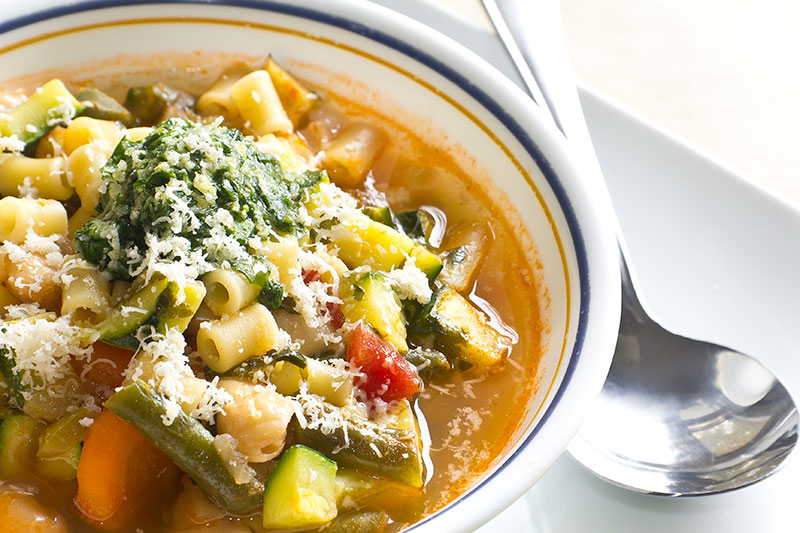 Delicious minestrone (Photo: Dreamstime)
Delicious minestrone (Photo: Dreamstime)
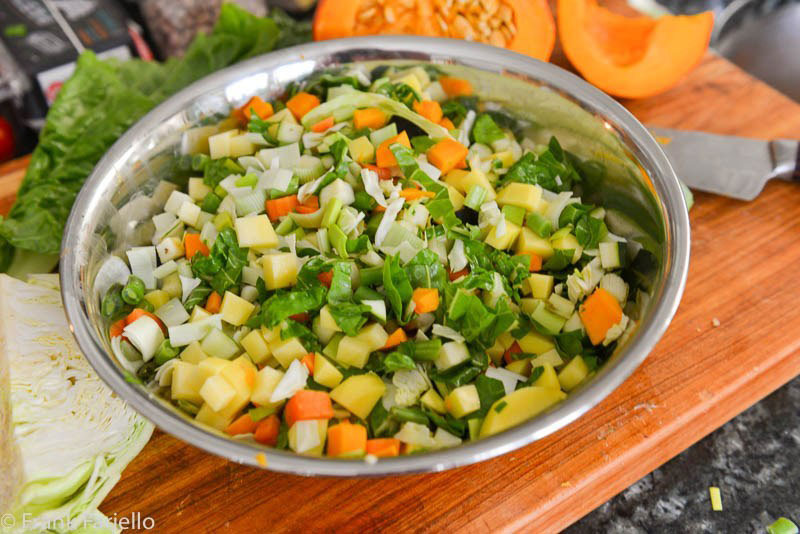 Photo: Frank Fariello
Photo: Frank Fariello
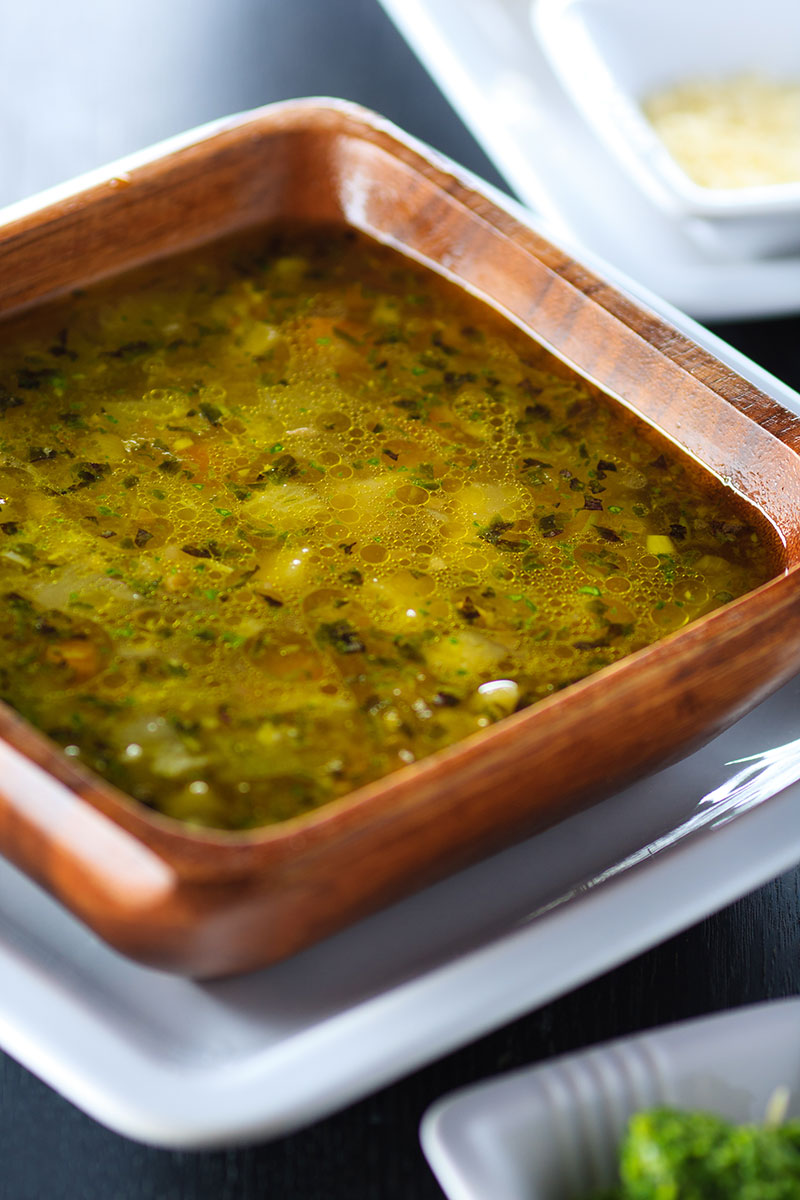 Minestrone with pesto (Photo: Dreamstime)
Minestrone with pesto (Photo: Dreamstime)
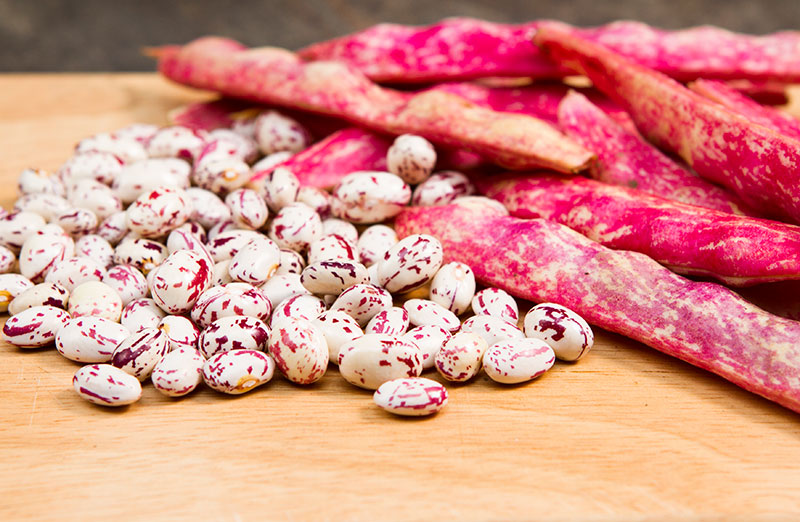 Borlotti beans are a key ingredient of minestrone alla genovese (Photo: Dreamstime)
Borlotti beans are a key ingredient of minestrone alla genovese (Photo: Dreamstime)
 Ditalini rigati are a good pasta option for minestrone (Photo: Dreamstime)
Ditalini rigati are a good pasta option for minestrone (Photo: Dreamstime)





